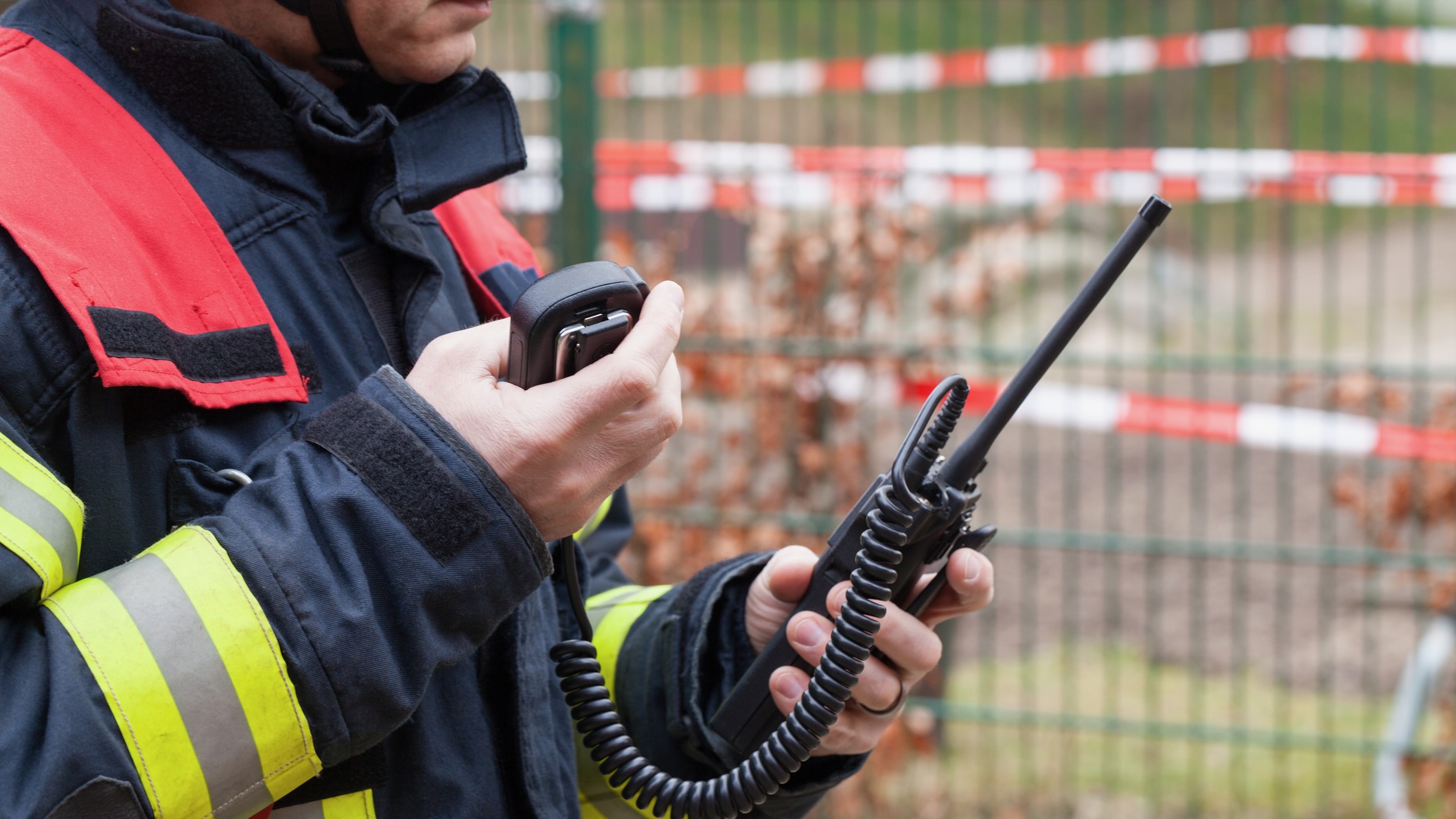Analog television debris: Where oh where to put it?
CPB is planning a station survey to determine the extent of a problem that has crept up practically unnoticed during planning for the DTV transition: what pubcasters can or should do with old analog equipment.
Some stations are simply letting the equipment sit while they ponder its fate. But that can take a huge amount of space: Many analog TV transmitters are the size of three refrigerators in a row, accompanied by a high-voltage power supply nearly as big. The obsolete analog antennas, still perched in the sky, add weight to aging towers that threaten to topple on equipment below.
Selling all this outdated stuff poses its own complications, including federal liens, university property-disposal rules and the glut of retired hardware that has few buyers.
Paying recyclers to scrap it for materials sometimes costs more than would be gained, especially for the copper in antenna lines hundreds of feet up. And simply dumping it may be complicated due to hazardous-waste regulations.
Broadcasting insiders were caught off-guard by a question from the audience during an Association of Public Television Stations Capitol Hill Day panel last month.
William Cooperman, head of the Public Telecommunictions Facilities Program, admitted that “it’s something we’ll have to look at.” He wondered aloud about the costs involved.
William Freedman of the FCC’s Media Bureau said he was familiar with the challenge to consumers of recycling their old televisions but unaware of problems facing broadcasters. “I haven’t seen it in that context,” he said.
Attorney Todd Gray, head of the public broadcasting and educational telecom law practice at Dow Lohnes in Washington, summed up the general reaction: “I have not been asked that question, but it’s an interesting one,” he said, adding, “We have not looked at it at all.”
CPB hopes to conduct the station survey possibly as soon as April or May, said Senior Director of Media Technologies Don Lockett. “We must determine just how big an issue this is,” Lockett told Current.
Should somebody watch who ultimately ends up with all this analog refuse? At the National Educational Telecommunications Association Conference in January in Tampa, Lockett quipped, “We don’t want to see the headline, ‘Old CPB Equipment Being Used by the Taliban.’”
Transmitters as big as a wall
Georgia Public Broadcasting faced the problem of analog junk in 2007, when it replaced two antennas and replaced nine transmitters with digital models. Three of the retired analog transmitters were new enough to be converted to digital, and another, damaged by a tornado, was rebuilt as a lower-power transmitter, said Bob Gehman of Kessler and Gehman Associates, engineering consultants in Gainesville, Fla.
“That leaves five,” Gehman said. “We turned them off and just left them to sit there.”
“Some are so big, they actually form part of a wall,” he added, so they can’t be moved.
The antennas just stayed, too. Five of the towers were designed to hold pairs of antennas for simulcasting both analog and digital TV. “We decided just to leave the analog antennas,” he said. “It’s very expensive to take them down. For tower riggers to come in, it would cost around $50,000 per site. The salvage value wouldn’t even put a dent in that.”
Dismantling the extra 8-inch–thick copper transmission lines that run 1,000 feet or more up the towers also would cost more than GPB could earn from recycling, Gehman said.
Oklahoma’s four-station public TV network also has a few old transmitters sitting around.
“In a lot of cases, lines and antennas are just being stored at the sites, in old transmitter buildings,” said Mark Norman, deputy director of technology at the Oklahoma Educational Television Authority.
“We’re trying to find somebody who would want them,” Norman said.
But there’s no sale unless someone is looking for a channel 32 or 38 analog transmitter.
OETA is also rebuilding or replacing 15 translators. “We’re just scrapping those to metal dealers,” he said.
Glut of analog paraphernalia
Some see a practical role for the old gear, if it can be converted for DTV. “Many of our customers have been converting their analog transmitter to digital backup just in case they may have to revert to the previous channel,” said Richard Redmond, director of strategic marketing and business development of Harris Broadcast Communications, the biggest TV transmitter vendor.
There’s also some value in getting the antenna down. Removing the NTSC antenna makes tower space available for other clients, said Barry Thomas, president of the Society of Broadcast Engineers.
That is, if the tower is strong enough. Several pubcasting towers have fallen in recent years as stations struggle with maintenance costs.
Harris works with Transcom Corp., a broadcast equipment broker in Huntingdon Valley, Pa., to help stations sell used items. Transcom has been brokering sales for nearly 30 years. (Stations interested in selling items may reach Transcom at 800-441-8454.)
Its president, Martin Cooper, admits finding buyers for analog equipment is difficult. The market for NTSC analog broadcast equipment has been mainly in North America. The equipment couldn’t be used in most other countries without expensive modification, he said.
Plus, with DTV being adopted in this country, and Canada switching over by 2011, there’s a glut of analog gear. Mexico will be all-digital by 2022.
Roman Yerema, head of Equipment Center West near Austin, Texas, has more than 100 pallets of analog items for sale, covering about 4,000 square feet. “Everybody wants to sell,” he said. (This broker may be reached at 800-677-5778.)
PTFP regs may complicate sales of newer items. The federal government holds a 10-year lien on equipment purchased with its funds. Stations can apply to have the lien transferred to another item at least equal to the federal interest in the original equipment. A station may also buy out the federal interest with nonfederal monies.
For stations licensed to states and universities, “there may be rules . . . for taking items off inventory,” said Skip Hinton, NETA president.
Rochester pubcaster Scott Fybush is an authority on broadcast hardware. His website, fybush.com, even features his photos of a Tower of the Week and a Tower Site Calendar.
Fybush says much of this stuff is just plain worn out.
Because pubTV stations are perpetually cash-strapped, some transmitters are “so old, all you can do is turn it off and walk away,” he said. “Unfortunately it’s never one of those things that a major donor sponsors. Who wants their name on a transmitter?”
Added Bruce Jacobs, chief technologist at Twin Cities Public Television, “I’ve literally had equipment in such terrible shape that I threw it off the roof to make me feel better.”
To the dump?
Literally trashing the equipment isn’t always feasible, for environmental reasons.
“Normal disposal concerns apply with any electronic component or material that contains a potentially hazardous substance,” said SBE’s Thomas. Disposal sites are already antsy about consumers dumping millions of old analog sets.
OETA’s Norman had an assistant call every recycler within a 200-mile radius of Oklahoma City. Not one would take television sets, much less professional broadcast equipment. “Not a day goes by that I don’t get a call from a viewer asking about recycling,” he said.
Thomas suggested stations instead consider reuse. “Many components of a transmitter system are completely reuseable: power supplies, transformers, even many power amplifiers,” he said. However, “the NTSC exciter, a relatively small piece of the transmitter, and the transmission line filters are NTSC-specific and have virtually no use.”
Removing this junk can be cost-prohibi-tive. The analog antenna of Wyoming PBS’s station near Lander is perched atop a deteriorating, 50-year-old tower, often frozen over, nearly 9,000 feet up Limestone Mountain. Removal cost: $75,000. “I don’t have that laying around anywhere,” said Ruby Calvert, g.m.
If the 6-ton tower collapsed onto the station’s equipment building, “it would literally put us out of business,” Calvert said.
Calvert lobbied the state legislature for removal money. She’s “cautiously optimistic” that an amendment that has passed the Wyoming House will make it through the Senate.
She doubts the bill would be progressing without the testimony of Democratic legislator Stan Blake, who climbed the tower years ago during a contracting job.
If the state money doesn’t come through, engineers may need to remove the antenna piecemeal, starting with its batwings. That would reduce stress on the tower from wind and ice, which have felled towers elsewhere.
In addition to the Wyoming licensee’s three full-power transmitters and 47 digital translators, it has 27 analog translators. Bob Connelly, assistant g.m., said he’s considering repurposing some of those to cover problem-prone digital reception areas.
Packing off the old gear is tough on many engineers, said Jacobs of TPT. “In my long experience in broadcasting, this issue of discarding equipment that is really well-made turns even the crustiest engineer into a softy. It breaks our hearts,” he said.
“When the equipment is working well, is carefully crafted, is easy to work on and now has no value–that’s very hard for us to face.”
Web page posted March 3, 2009
Copyright 2009 by Current LLC






